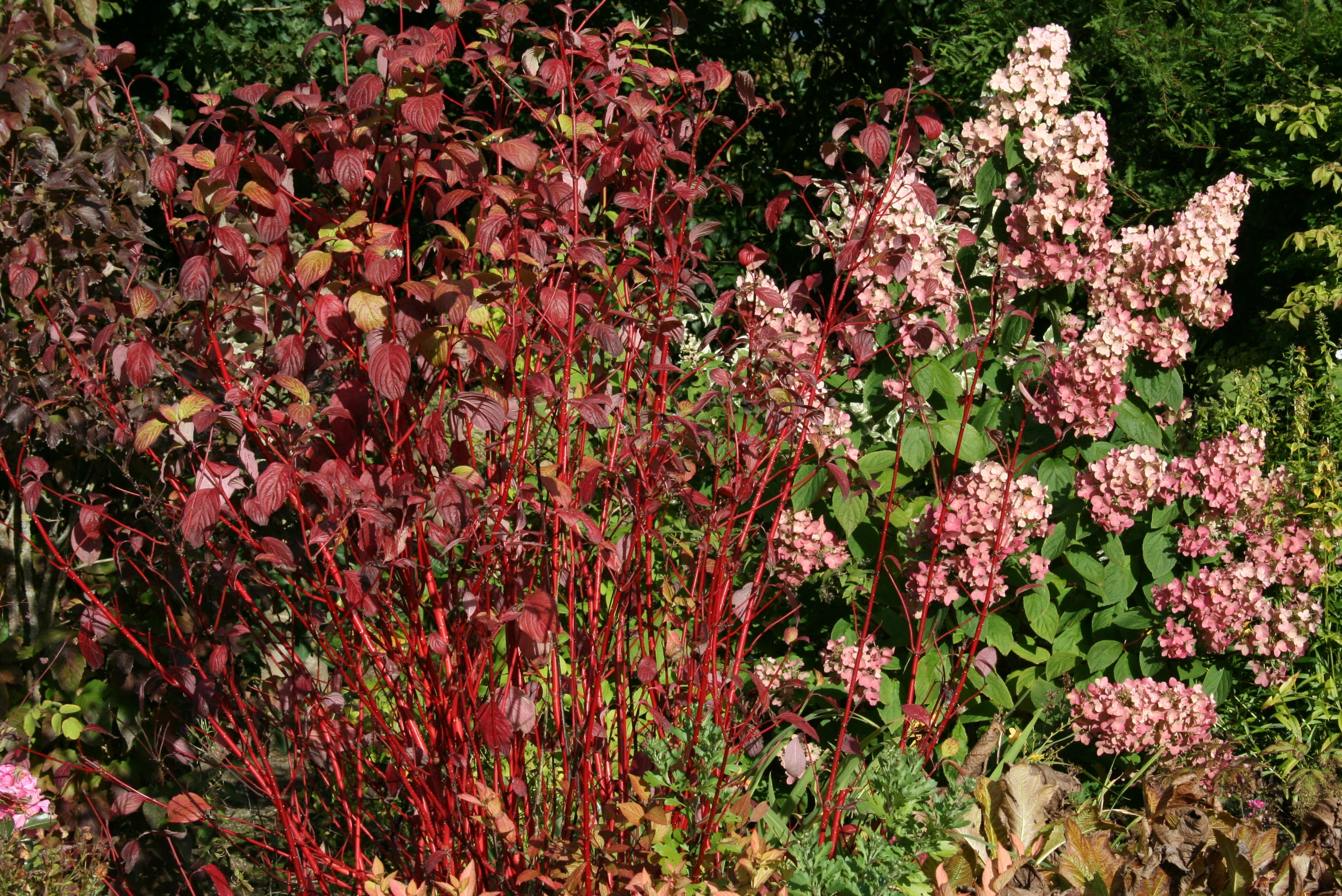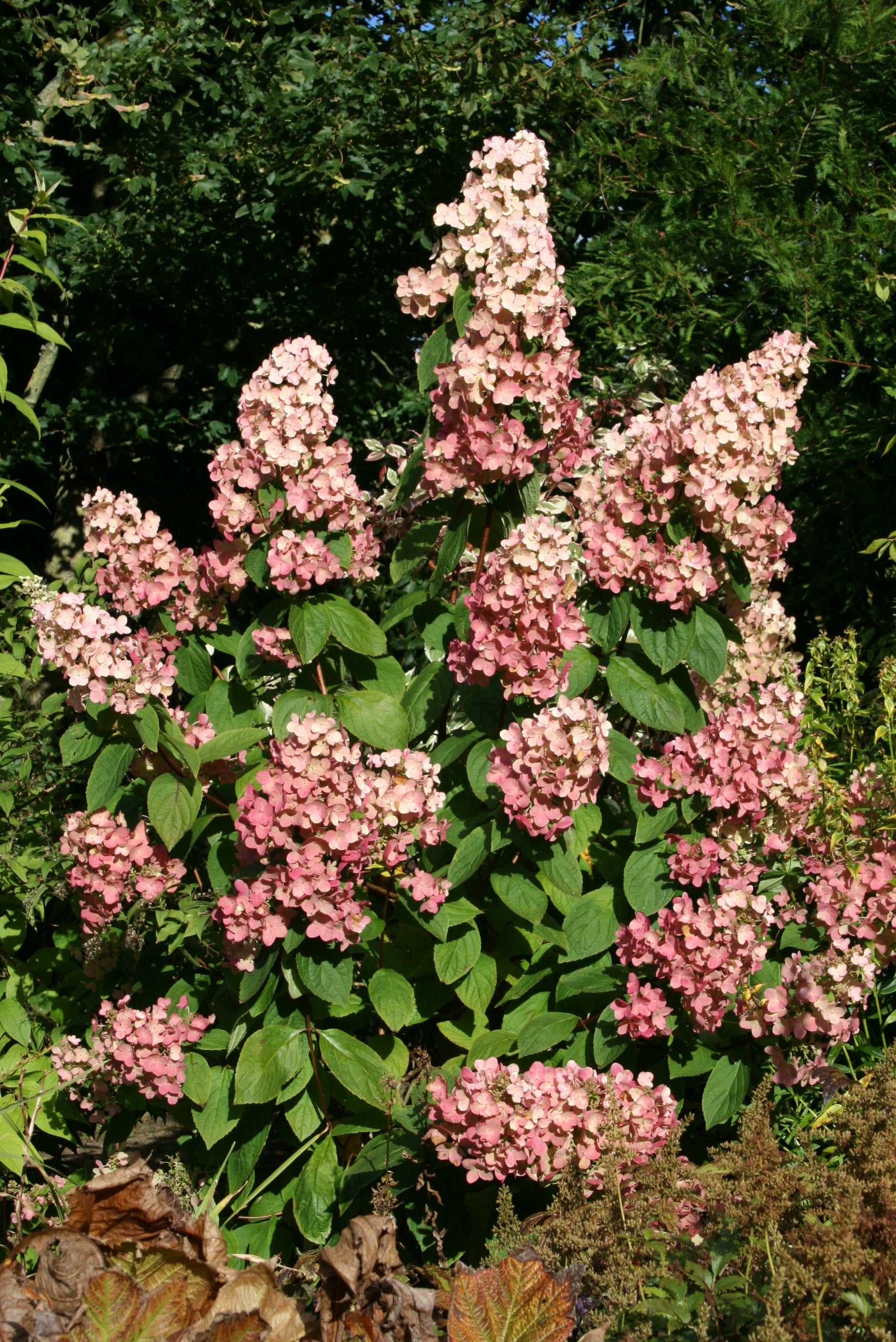Hydrangea paniculata Pink Diamond = 'Interhydia'
Approx. 0.5 litre pot
About this cultivar:
Hydrangea paniculata Pink Diamond = 'Interhydia' is a compact cultivar that typically grows in a rounded, upright form. It is noted for producing dense, pyramidal, cone-shaped panicles of sterile and fertile flowers at the ends of red-stemmed branches. Flowers emerge white but mature to a rich pink. The smaller fertile flowers are somewhat hidden beneath the showier, sterile ones. Strong stiff stems hold the flower panicles upright with no drooping.
Won the 2002 Royal Horticultural Society Award of Garden Merit (RHS AGM).
A 1980s seedling of ‘Unique’ it was selected by Jelena and Robert de Belder at the Kalmthout Arboretum in Antwerpen, Belgium. The Belders have been breeding hydrangeas since the 1960s with their first selection being 'Unique' itself!
- Position: Full sun, partial shade
- Soil: Almost any soil, grows well in Ballyrobert
- Flowers: June, July, August
- Other features: Grows well in Ballyrobert, Royal Horticultural Society Award of Garden Merit (RHS AGM)
- Hardiness: H5 - Hardy in most places throughout the UK even in severe winters (-15 to -10°C), Fully hardy - grows well in Ballyrobert!
- Habit: Clump forming, bushy
- Foliage: Deciduous
- Height: 120 - 180 cm (4 - 6 ft)
- Spread: 120 - 180 cm (4 - 6 ft)
- Time to full growth: 5 to 10 years
- Plant type: Herbaceous Perennial, shrub
- Colour: Green, red, pink
- Goes well with: -
About this genus:
Hydrangea (hy-dran-je-a) get its name from the Greek hydor, water, and aggeion, a vessel, or vase, in reference to the shape of the seed capsule. It is a classic garden plant. The genus Hydrangea contains about 75 species of shrubs, trees and woody vines, along with hundreds of named cultivars. Hydrangeas are grown primarily for their large flower clusters that vary in shape from flat lacecaps, to long panicles, and large, round mopheads.
At Ballyrobert we only really grow cultivars from the species paniculata (pointed panciles of flowers) and arborescen (mopheads of flowers). You may read lots of different things about pruning paniculata cultivars. We find the best thing to do is shear them back hard to about three feet from ground level in March (spring) each year. For the mop-headed Hydrangea arborescen cultivars we cut them back further to ground level each March. Strange, as the name (arborescen means 'tree like') would imply you leave them alone.....
Hydrangeas grow best in sun or partial shade and are not too fussy regarding soil (as long as it isn't extreme). We typically grow them in mixed borders, and in our garden at Ballyrobert we have them almost everywhere!








